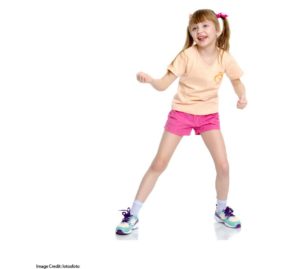To learn in school, I need to pay attention.
More precisely, I need to pay attention to the subject I’m learning.
If I’m attending to …
…the sudden snowfall outside, or
…the spider on the ceiling, or
…the odd squeaking sound coming from the radiator,
then I’m not paying attention to…
…the Euler bridge problem, or
…the subjunctive mood, or
…the process for setting group norms.
We teachers wrestle with this problem every day. What can we do to help students pay attention so that they learn?
But Does It Work in Real-World Classrooms?
This urgent question has an obvious answer — and that obvious answer has obvious problems.
Obvious Answer: exercise. We’ve got lots of research showing that exercise enhances various neural processes essential to long-term memory formation.
And, we’ve got research — especially with younger children — that movement and exercise in class enhance attention.
Obvious Problems:
First, all that research doesn’t answer the essential question: “do movement and exercise help students learn?” We know they enhance attention. And we know that extra attention should boost learning. But: does it really work that way?
Second, most of that research on in-class exercise happens with younger students. What about older students? And, by “older,” I mean “older than 3rd grade.”
Wouldn’t it be great if someone looked at the effect of exercise on attention and learning in older students?
Good News, and More Good News
A research team in Canada has explored these questions. And, they did so with a helpfully clear and sensible research paradigm.
They invited college students (who are, indeed, older than 3rd graders) to watch a 50 minute lecture on psychology.
One group watched that lecture straight through, with no breaks.
A second group took 3 breaks, each one lasting five minutes. During those breaks, they played a fun video game (“Bejeweled”). That is: they DID take breaks, but they DIDN’T exercise during those breaks.
A third group also took 3 breaks, each one lasting five minutes. During those breaks, they did aerobic exercises: jumping jacks, high knees, etc.. Like the second group, they DID take breaks. Unlike the second group they DID exercise.
The results?
Lots o’ good news:
First: the exercise group were considerably more alert during the whole lecture than the other two groups. (That is: their heart rate was measurably higher.)
Second: the exercise group paid attention much better. They remained on-task about 75% of the time during the full lecture.
By way of contrast, the no-break group started at 60% on task, and fell to 40%. And the video-game group — who took a break but didn’t exercise — fell from 70% to 30%. YIKES.
Third: We care about alertness and attention only if they lead to more learning. Well: 48 hours later, the exercisers remembered more.
That is: they remembered 50% of the lecture, whereas the other two groups remembered 42%. (50% doesn’t sound like a lot. But the point is: it’s considerably more than 42%.)
So, this study tells us that older students (like younger students) benefit from exercise during a lesson.
Specifically, they remain more alert, stay on task more, and learn more.
BOOM.
Final Thoughts
First: I think it’s helpful to see how each research study builds on previous ones. This study gives us important new information. But, it does so by drawing on and extending research done by earlier teams.
In educational psychology, no ONE study shows anything. Instead, each study builds incrementally on earlier ones — and creates a more interesting, more useful, more complex, even more contradictory picture.
Second: in this study, the students watched video lectures. Their experience wasn’t EXACTLY like online learning. But: it was an interesting relative of online learning.
Should we extrapolate from this study to encourage our online learners to move? That doesn’t sound crazy to me.
Third: One interesting question in this study. The students who took breaks — including those who exercised — took MORE TIME than those who didn’t. The “no break” group took 50 minutes; the “exercise break” group took 65.
So: they learned more — AND it took more time for them to do so. We have to be honest with ourselves about that finding.
My own view: I’d rather give up some class time for exercise if it means students attend and learn more. And, if that means I have to present less content, I’m okay with that exchange.
After all: it doesn’t matter if I teach material that students don’t learn. My job is to help them remember. Exercise breaks do just that.


![AdobeStock_342990650_Credit [Converted]](https://www.learningandthebrain.com/blog/wp-content/uploads/2020/06/AdobeStock_342990650_Credit-Converted-150x150.jpg)

